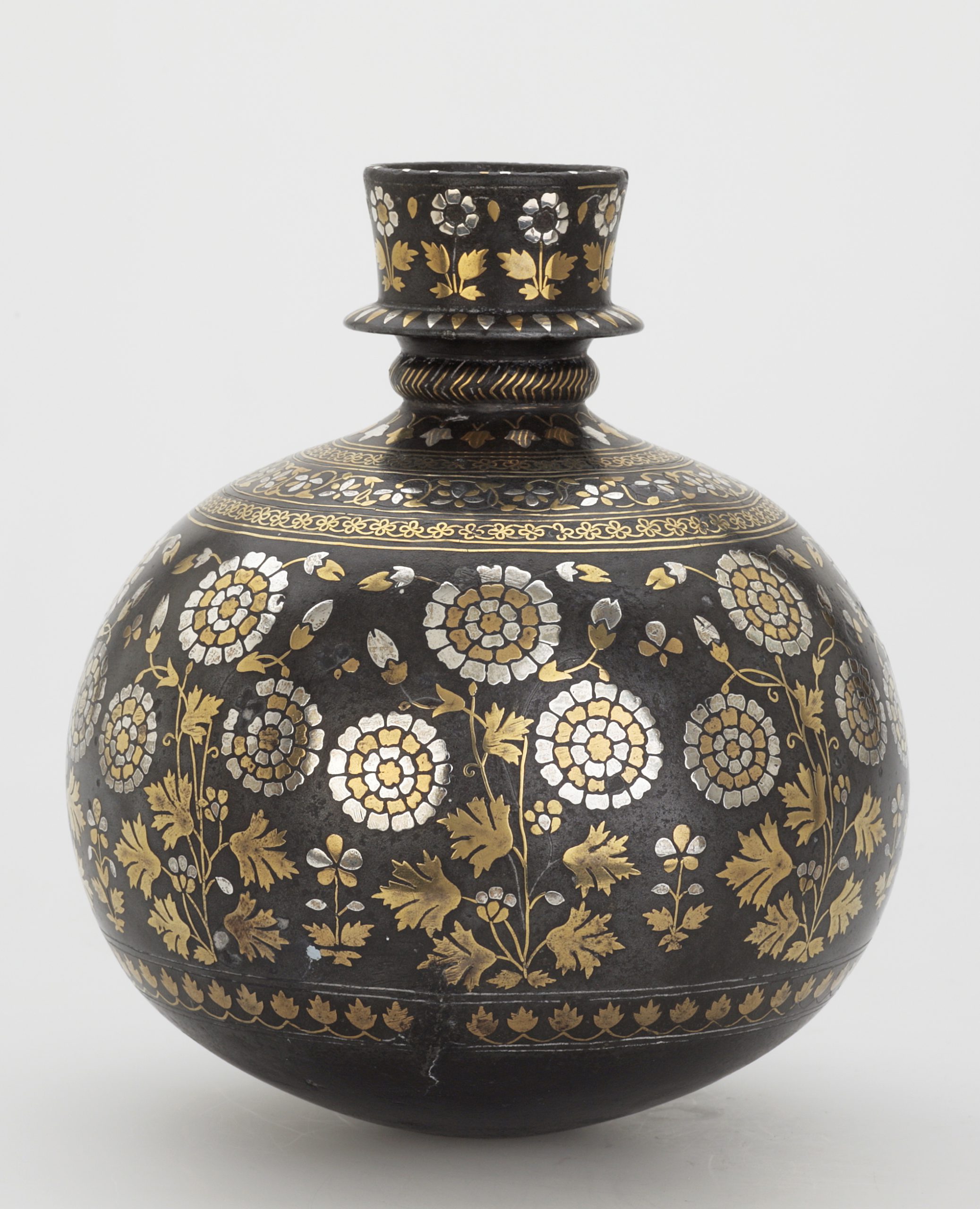 Print Page
Print Page
 Print Page
Print Page
Location: Mughal India, the Deccan
Materials: copper alloy with high zinc content, blackened and inlaid with brass and silver (‘Bidri’ ware)
Dimensions: 21 x 18.5cm
Accession Number: MTW 1588
Other Notes:
Smoking was introduced into the Mughal empire at the end of Akbar’s reign, when Asad Beg, one of his noblemen, brought tobacco and hookahs, or waterpipes, back from Bijapur in the Deccan. Asad Beg reported that tobacco was well known at Mecca and Medina and presented Akbar with a fine jewelled pipe with a mouthpiece of Yemeni carnelian. Although Akbar’s physician forbade him to smoke, the fashion for hookahs soon caught on and, as in Iran, various objects were adapted to hold the scented water through which the tobacco smoke passed. These included coconuts and various types of glass vessel, including bottles in which Dutch gin was exported, as well as spherical containers shaped like Indian waterpots, as here. These rested on rings or collars so that they stood upright. In addition, small hand-held hookah bases were made, some in the shape of mangoes or other fruit, or even in animal form [see MTW 1500].
Bibliography:
J.M. Rogers, The Arts of Islam. Masterpieces from the Khalili Collection, London 2010, cat.352, p.296.
